[Layout] PosterO: Structuring Layout Trees to Enable Language Models in Generalized Content-Aware Layout Generation
[Layout] PosterO: Structuring Layout Trees to Enable Language Models in Generalized Content-Aware Layout Generation
- paper: https://arxiv.org/pdf/2505.07843
- github: https://github.com/theKinsley/PosterO-CVPR2025
- CVPR 2025 accepted (인용수: 0회, 250517 기준)
- downstream task: Context-aware Layout Generation
1. Motivation
-
기존의 content-aware Layout Generation은 2가지 한계가 있었음
- Image-centric enhancements를 중시했음
- “Saliency map”기반의 saliency map을 입력하여 layout constraint을 제공 $\to$ 학습 데이터 부족으로 local solution space에 빠져, 낮은 퀄리티의 layout constraint를 생성함
- Rectangular shape만 고려했음
$\to$ LLM의 지식을 끌어낼 input으로 대체해볼까?
- Image-centric enhancements를 중시했음
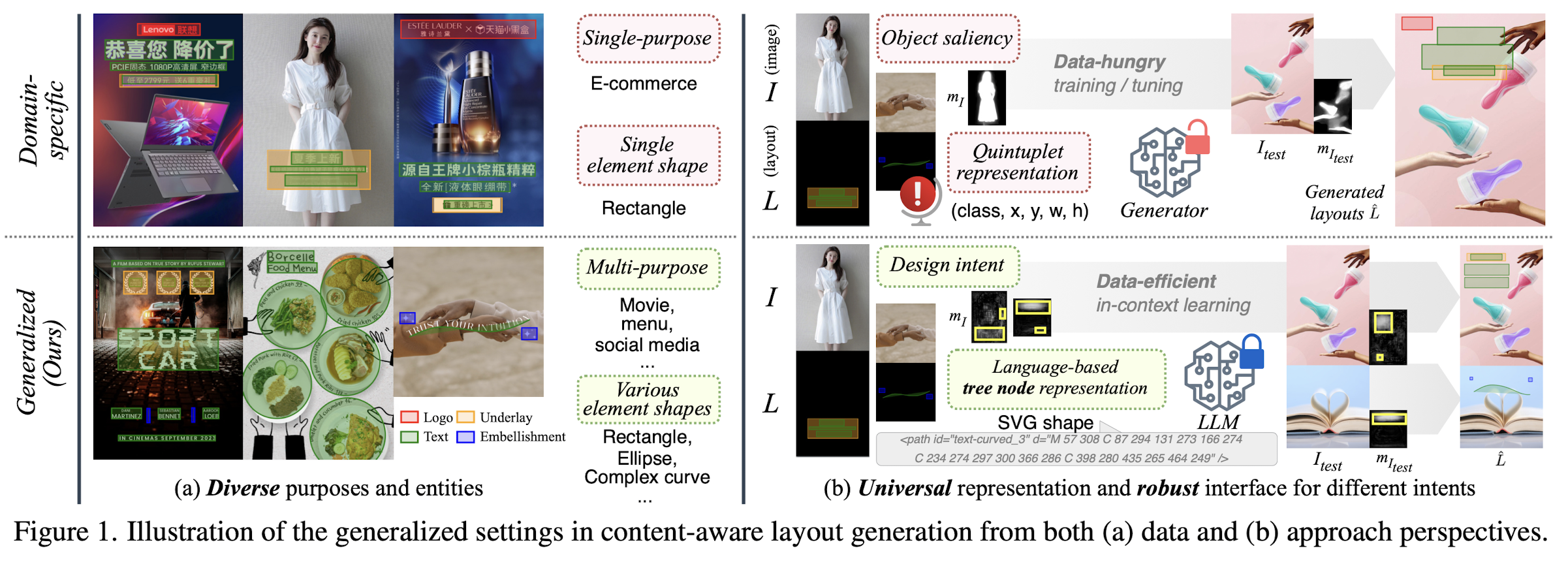
2. Contribution
-
LLM의 지식을 활용 가능하도록 Language-based로 layout을 새롭게 표현하는 Layout Tree를 제안함
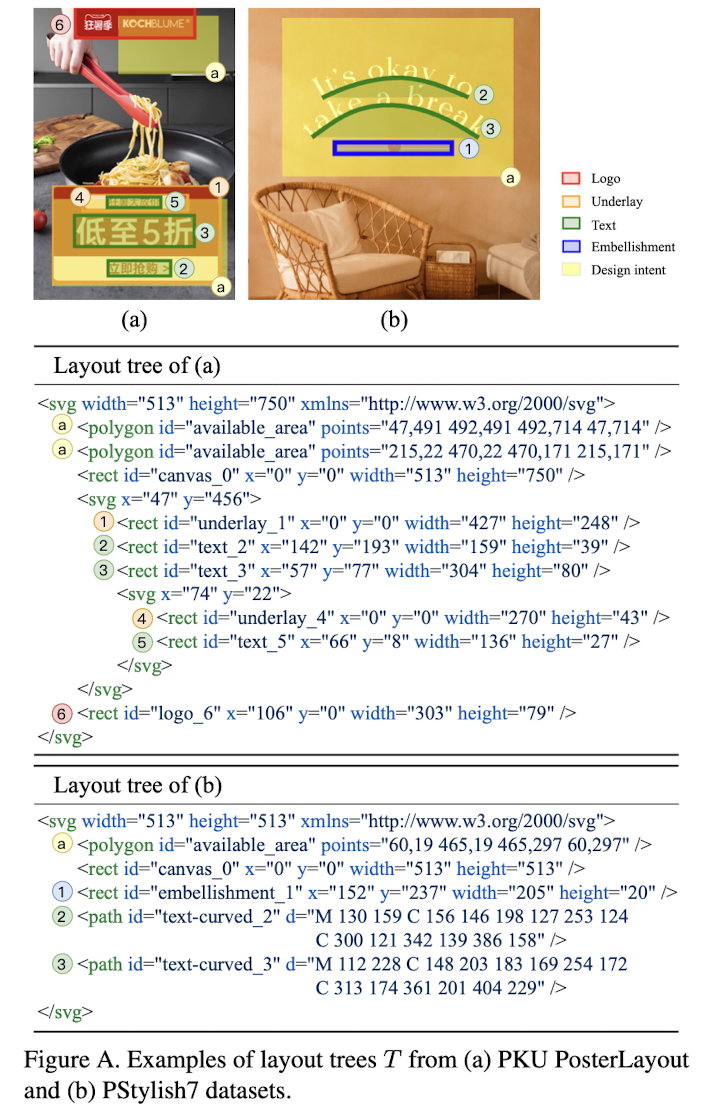
- Hirarchical node를 통해 “design intent”와 임의의 모양의 element를 표현
- SVG language로 표현
-
Intent-aligned layout만 생성하도록 design intent를 예측하는 detection 모델을 제안함
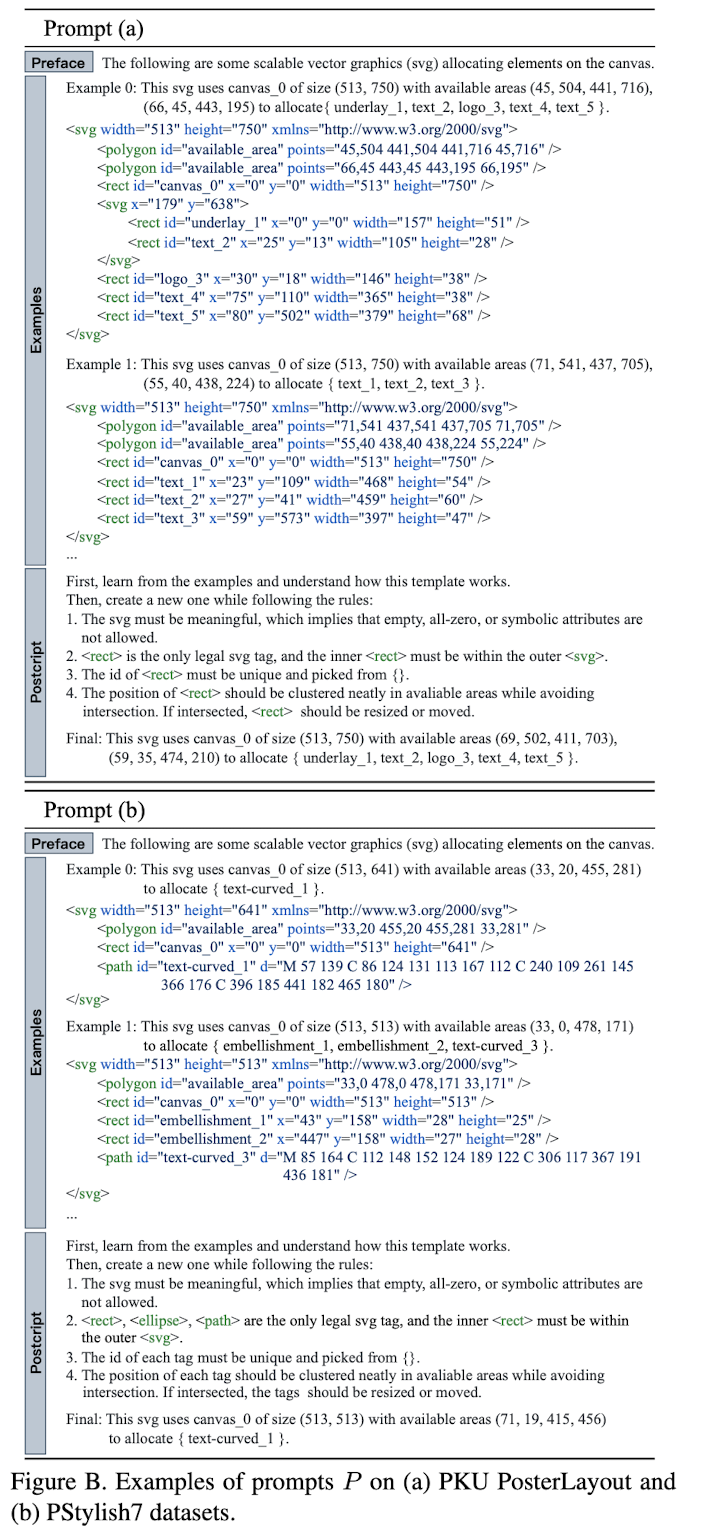
- RAG (Retrieval Augmented Generation) concept
- design intent가 유사한 포스터 데이터의 레이아웃을 참고
-
생성된 레이아웃을 poster design realization이 가능하도록 chat형식으로 rendering
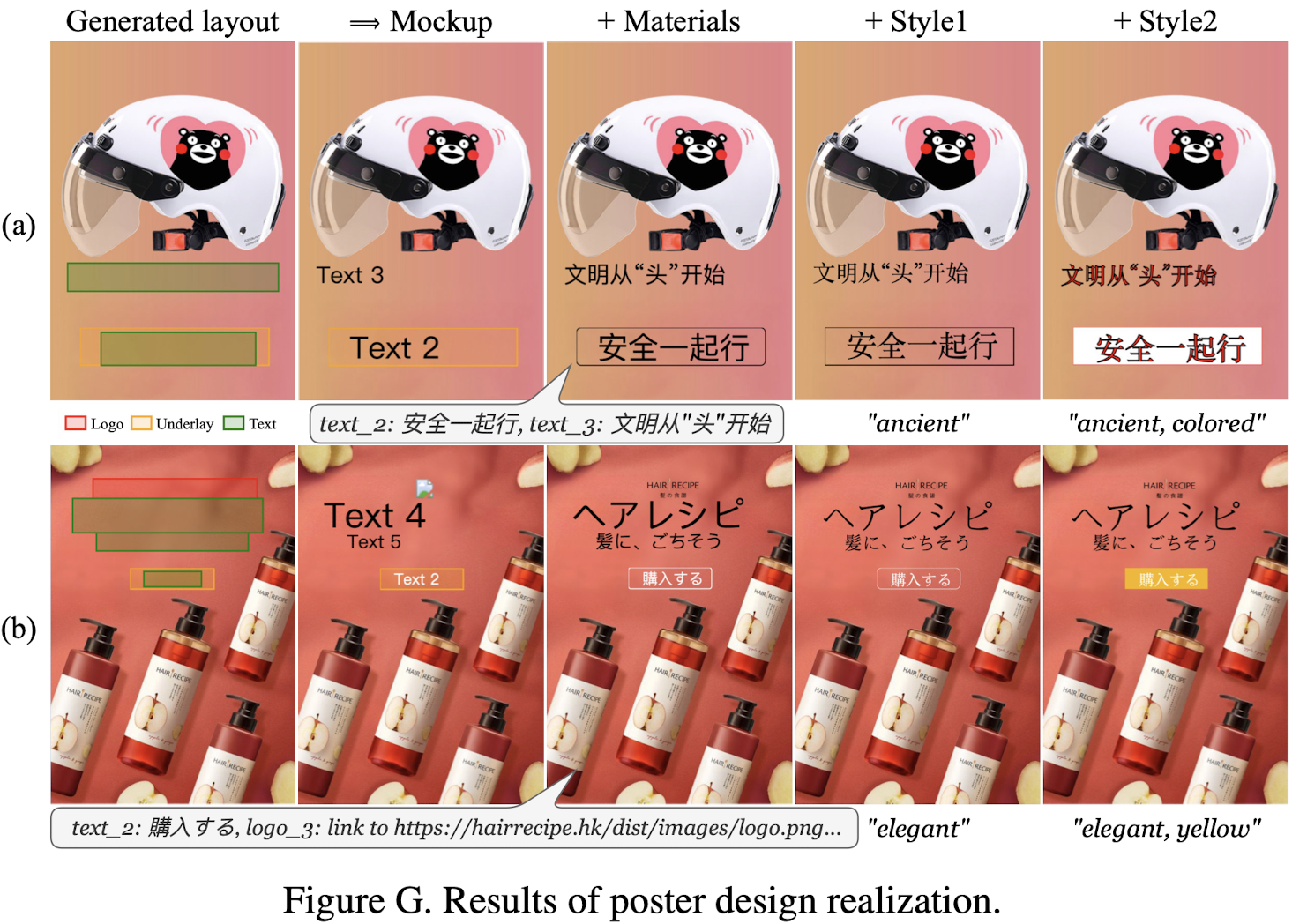
-
Content-aware Layout Generation task에서 SOTA
-
새로운 metric도 추가로 제안함
- Intent-aware content metrics $\to$ 기존의 saliency-aware metrics보다 신뢰할만함
-
PStylish7라는 poster뿐만 아니라 더 다양한 도메인 (SNS, Paint, Poem, etc) 데이터셋을 제안함

-
152개의 few-shot / 100개의 test examples
-
7개의 목적 / 8개의 요소 타입으로 구성
-
다양한 난이도 (train / test category gap)
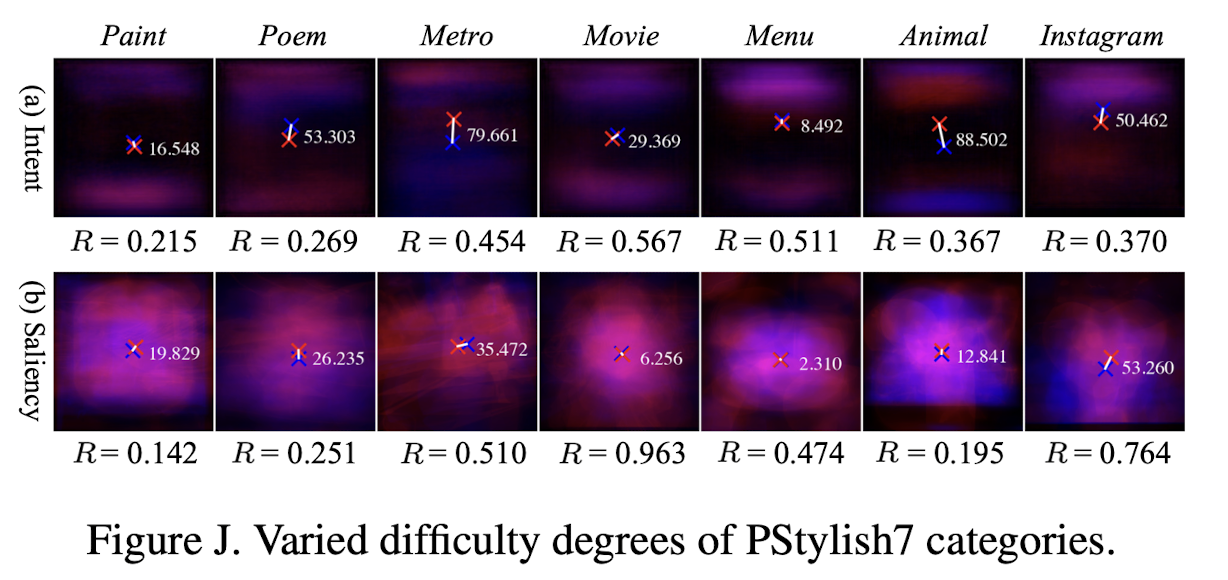
-
다양한 aspect ratio
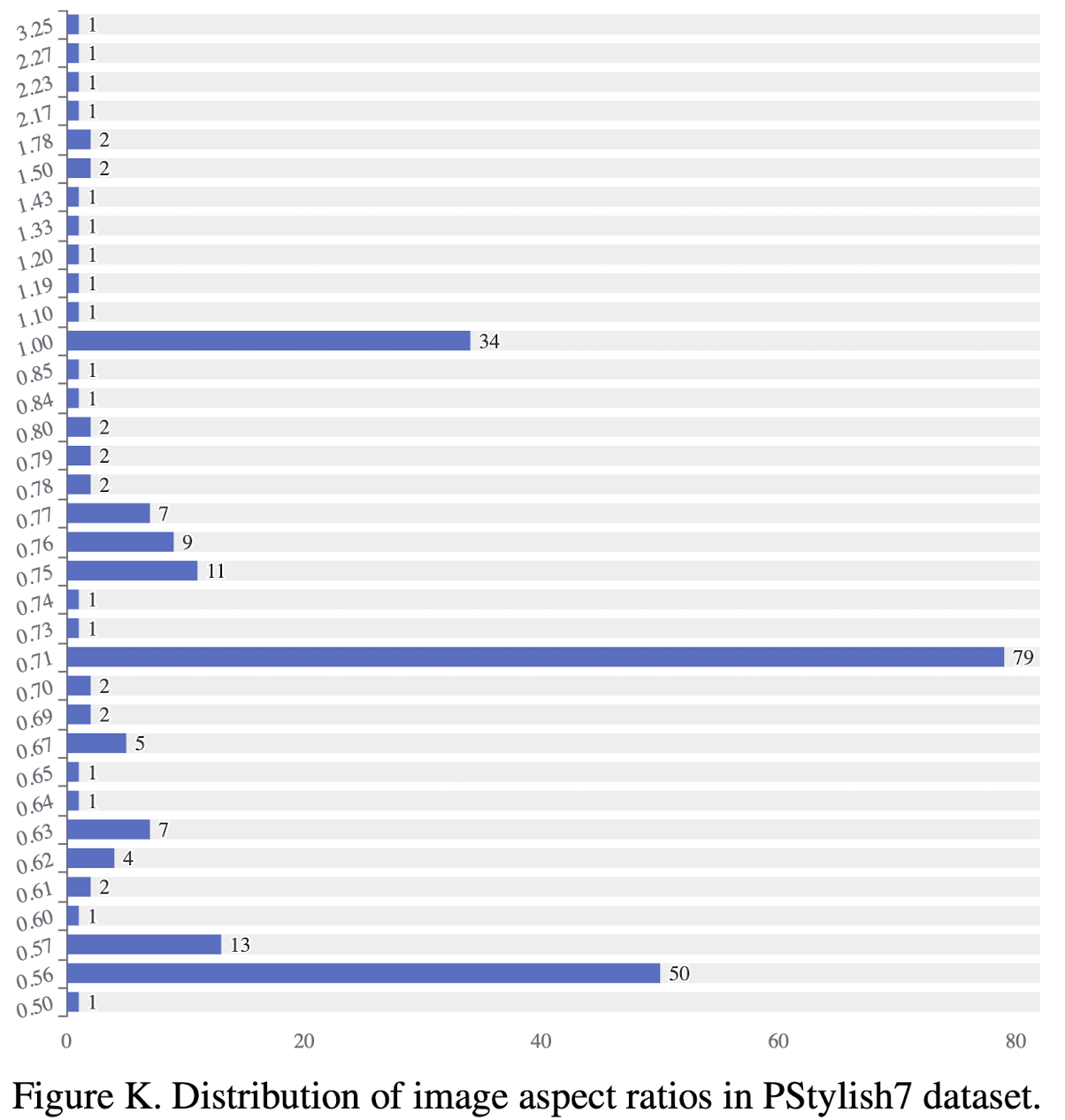
-
3. PosterO
-
Overall architecture
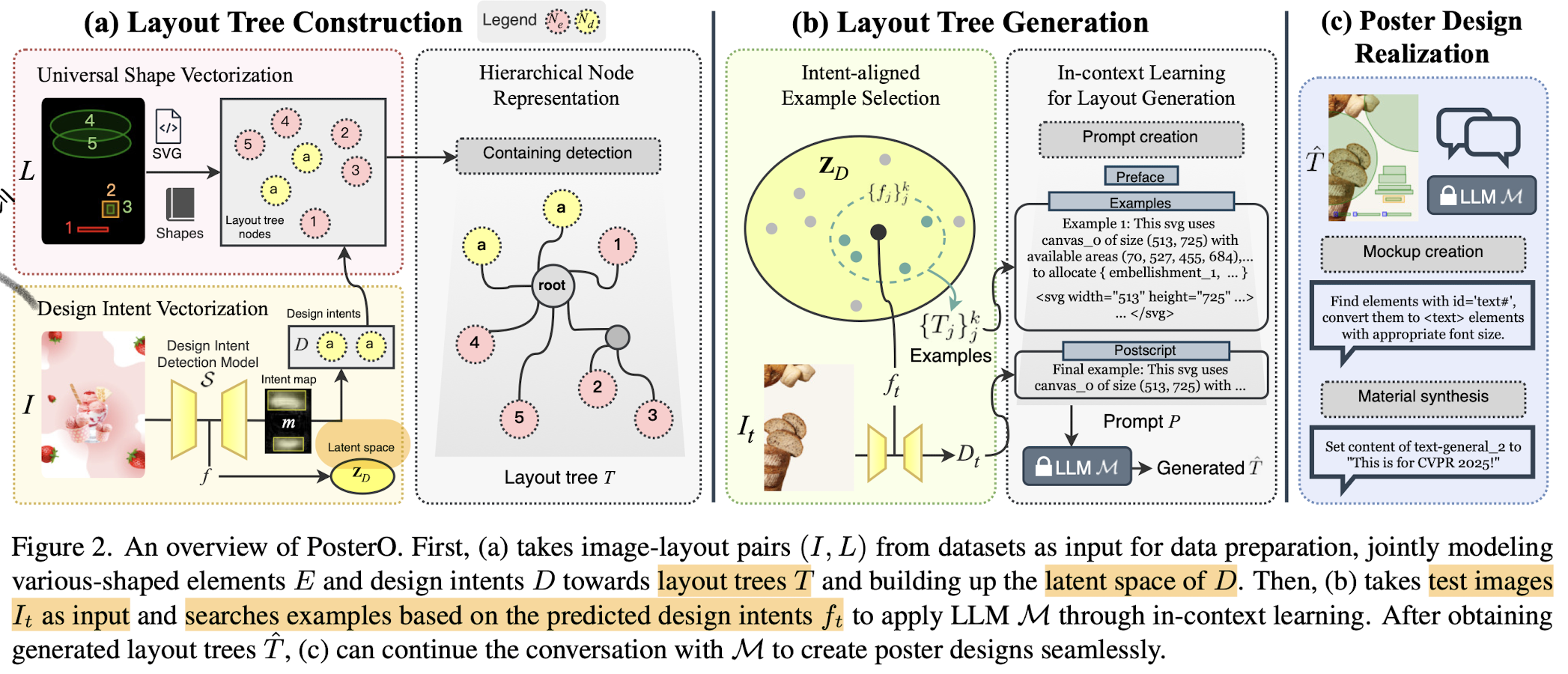
- Layout rendering까지 3 step
- 퀴리 포스터에 대한 layout tree construction $\to$ 쿼리 포스터와 디자인 의도가 비슷한 k-shot 후보 포스터들의 layout을 사용하여 layout tree generation $\to$ LLM 모델 M과 chat을 통한 poster design realization
- Layout rendering까지 3 step
-
Why language-based?
- LLM의 내재된 지식을 잘 활용하기 위해서는 language로만 layout를 표현해보자는 취지!
- Image, layout paired dataset이 LLM을 학습할때 사용한 (language-only) 데이터보다 턱없이 부족하기 때문이기도 함
-
How to represent layout in language?
-
SVG language 기반의 Layout Tree로 표현
-
Why SVG language? $\to$ rendering이 가능한 언어

- SVG-language로 랜더링하여 구현함 $\to$ 미리캔버스에서도?
-
-
3.1 Layout Tree Construction
-
Unverisal shape Vectorization $\to$ SVG standard를 차용함 [9]
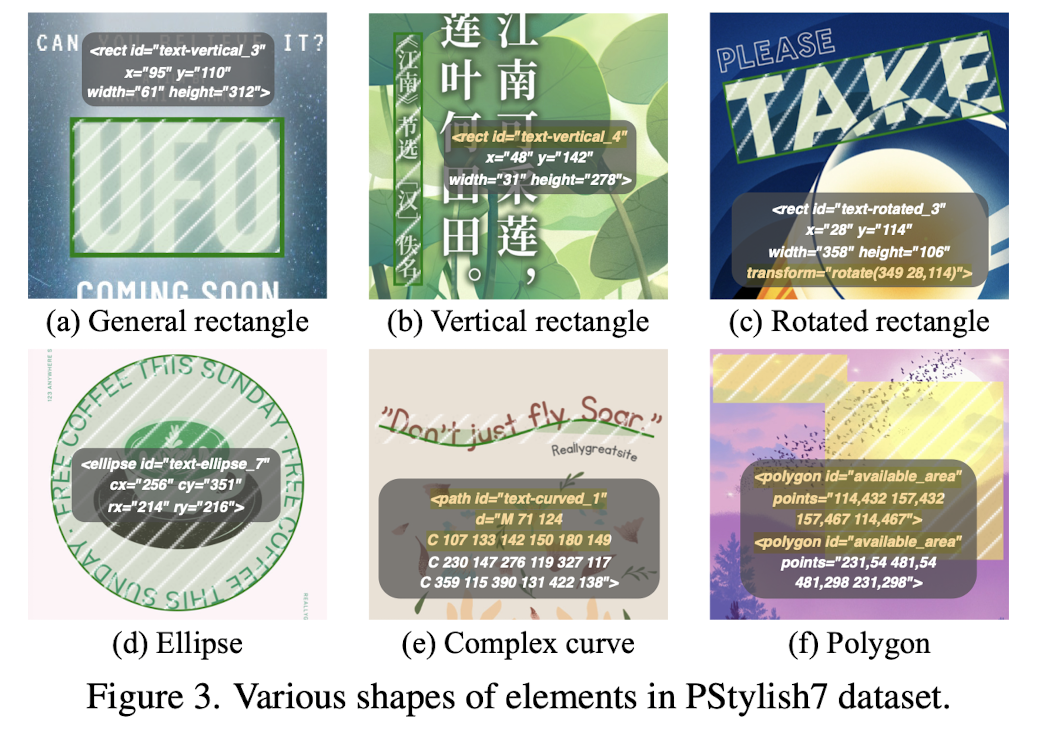
- Ellipse (타원)
- Rectangle (직사각형)
- Rotated Rectangle (마름모)
- Complex curve (곡선): Cubic Bezier 곡선 함수를 사용
- Polygon: design intent area 표시할때만 사용
-
Design Intent
- 주어진 이미지 내에서, 요소들이 배치할 수 있는 영역을 나타냄 (polygon $\to$ 다각형)
- U-Net 기반의 design intent detection model S를 준지도 학습하기 위해 MSE loss로 학습
- design intent bitmap을 예측 (segmentation model)
- U-Net의 Encoder output vector $\bold{Z}_D$는 design intent vector로, 향후 retrieval할 때 사용
-
Hirarchical Node Representation
-
Image 해상도를 고려한 SVG container로 구성

-
Underlay의 영역을 기준으로 정렬
-
Underlay 요소의 경우, 아래 식을 만족할 경우 subtree node에 상대적 거리좌표를 기준으로 표현
-
기준

-
상대좌표 예시
$<svg \quad x={N_a.x}\quad y={N_b.y}>{N_a’}{N_B’}</svg>$

-
-
요소별 Unitque Id 부여 ${c_i}$
-
3.2 Layout Tree Generation
-
Intent-aligned Example Selection
-
기존에는 Saliency map (혹은 Query image)를 기준으로 유사한 poster를 Retrieval 하여 참고할 레이아웃을 in-context learning 예시로 LLM에 넣었음
-
본 논문은 Design Intent Model의 latent vector $\bold{Z}_D$를 기준으로 retrieval 수행
-
검색된 candidate poster의 layout은 prompt template을 통해 짧은 글 형태로 변환
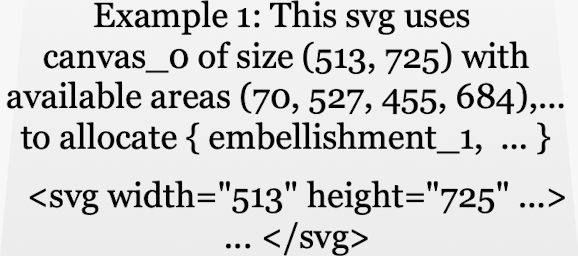
-
3.3 Poster Design Realization
-
Text요소의 적절한 font size, color등을 LLM이 context-aware하게 추천
-
3가지 프로세스
-
mockup creation
-
SVG language의 shape element $\to$ category format으로 변환
ex. <rect id=…> $\to$
or
-
-
material synthesis
ex. slogans(text context), image의 hyperlink
-
4. Experiments
-
Dataset
- PKU / Posterlayout / PStylish7
-
Evaluation metrics
-
Graphic metrics
- overlay ($\downarrow$): overlay 요소간의 겹치는 정도
- alignment ($\downarrow$): 요소간의 정렬이 틀어진 정도
- underlay ($\uparrow$): underlay 요소가 overlay 요소와 겹침 정도
-
Content metrics
-
non-salient space utilization ($\uparrow$): 비 saliency region에 레이아웃이 배치된 정도
-
salient space occlusion ($\downarrow$): salient space 내 레이아웃이 배치된 정도
-
readability ($\downarrow$): text 요소가 배치된 이미지의 gradient
-
(추가) design intent coverage ($\uparrow$): utilization과 유사
-
(추가) conflict ($\downarrow$): occlusion과 유사
$\to$ 새로운 metric사용 시, 실제 layout data에서
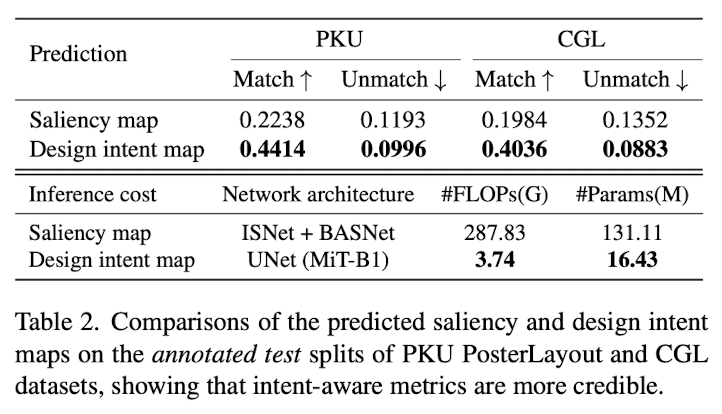
-
unmatched data 34% 감소
-
계산 비용 1.3%만 사용함

-
-
-
-
Models
- Design Intent Model
- Dataset별로 학습 (PKU, CGL)
- MiT-B1 semantic segmentation
- 1e-6 learning rate
- MSE loss
- Dataset별로 학습 (PKU, CGL)
- LLMs
- Llama 2-7B (L2)
- CodeLlama-7B (CL)
- Llama 3.1-8B (L3)
- Retrieve Module
- k=5,10
- Design Intent Model
-
정량적 결과
-
CGL
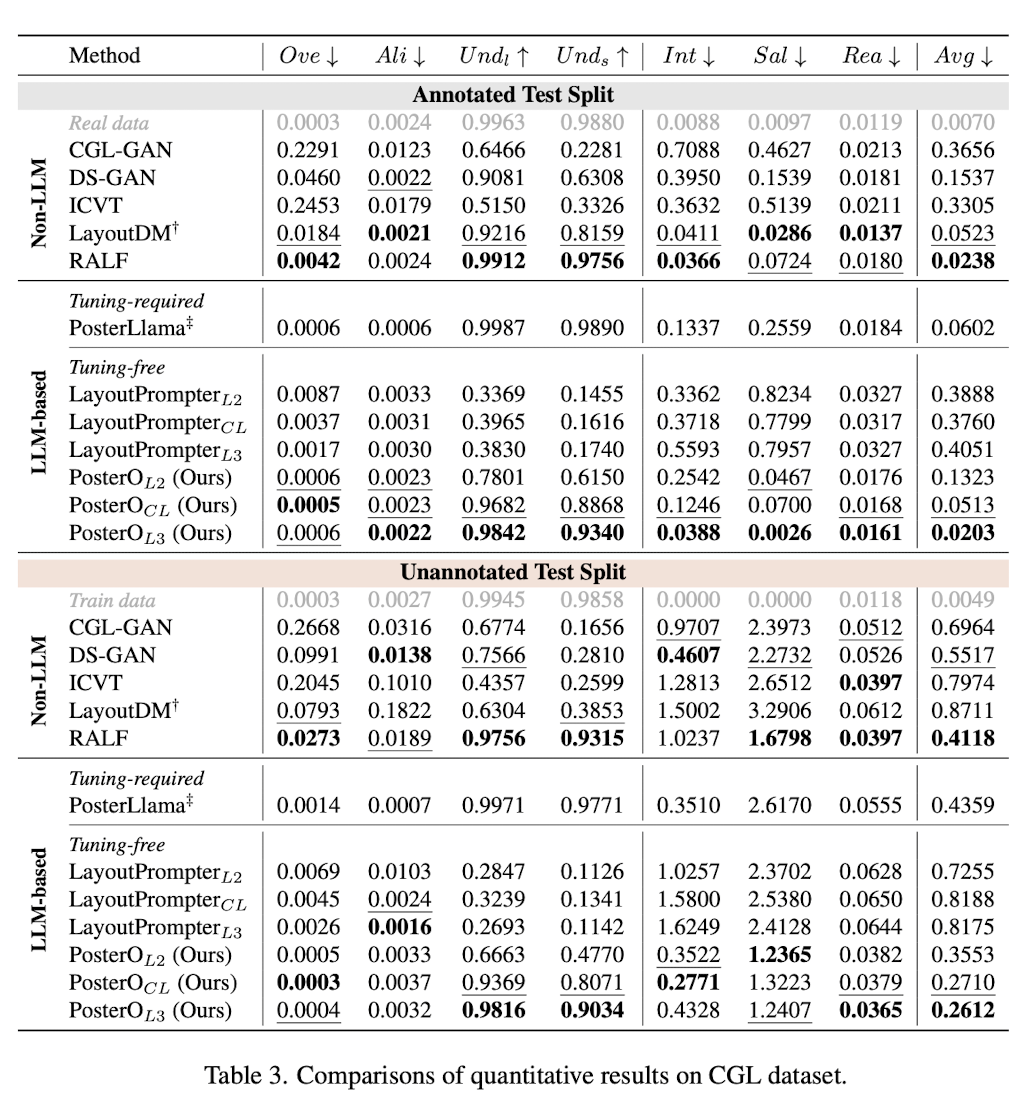
-
PKU
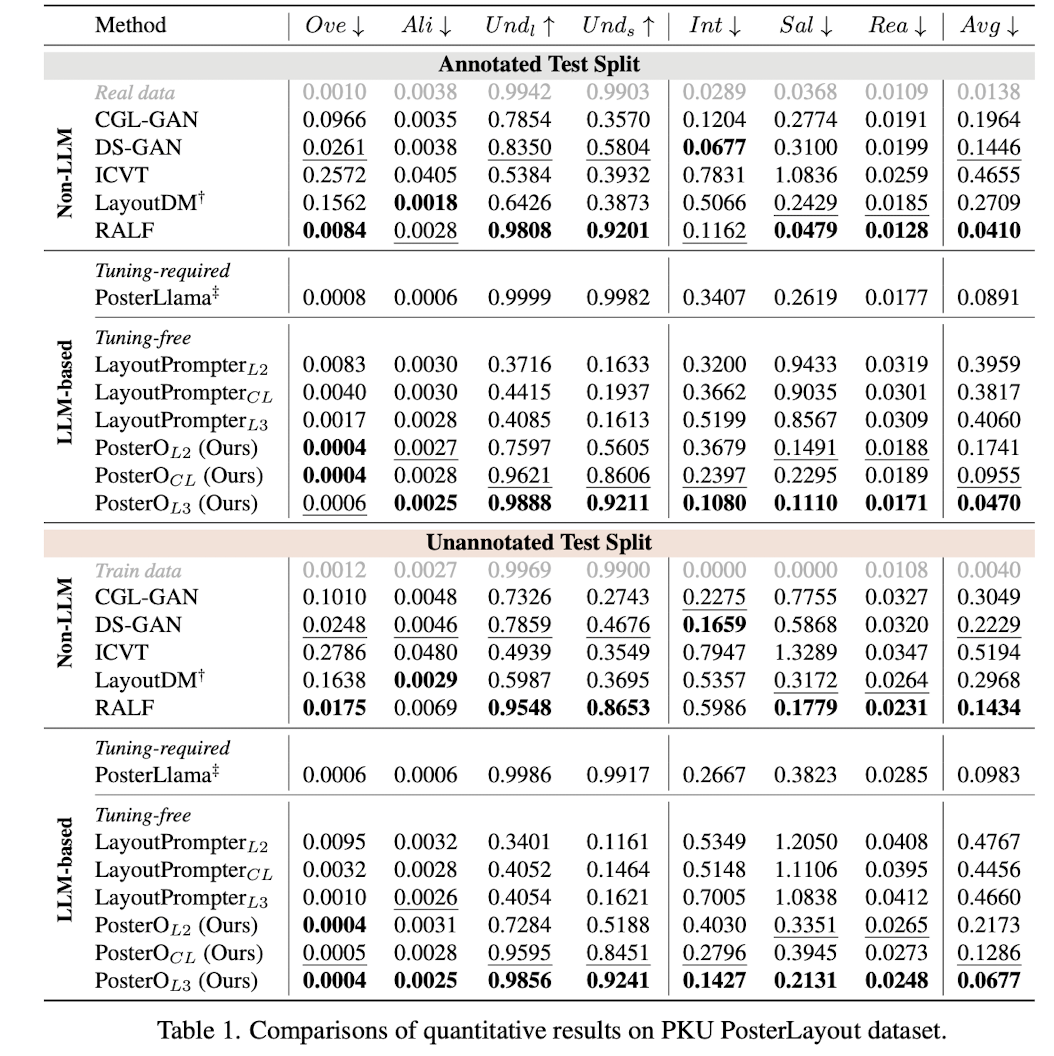
-
PStylish7
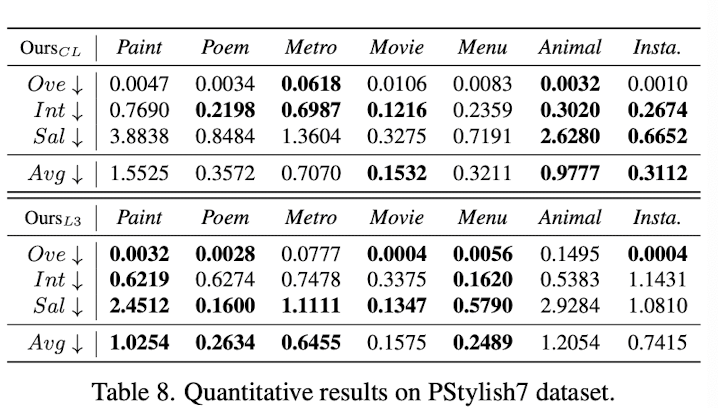
-
-
정성적 결과
-
CGL
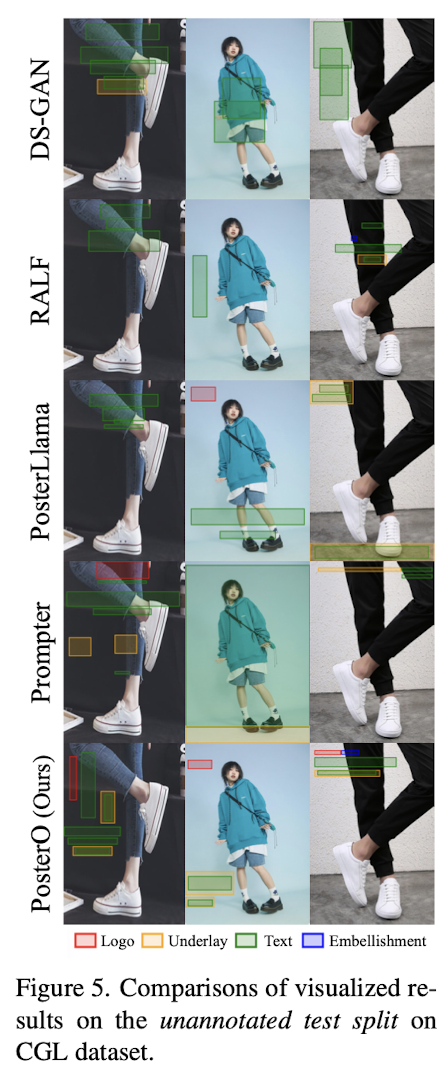
-
PKU
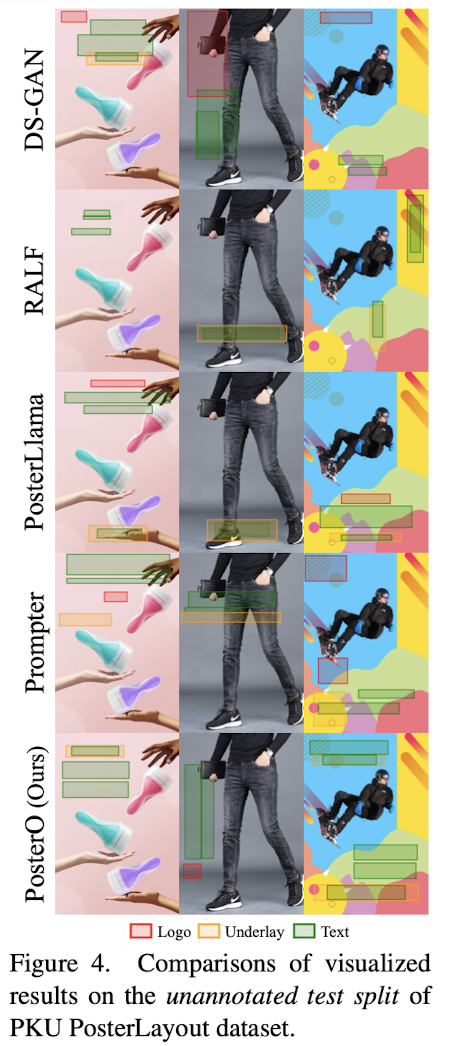
-
PStylish7

-
-
Ablation Studies
-
Layout tree construction 방법에 따른 실험
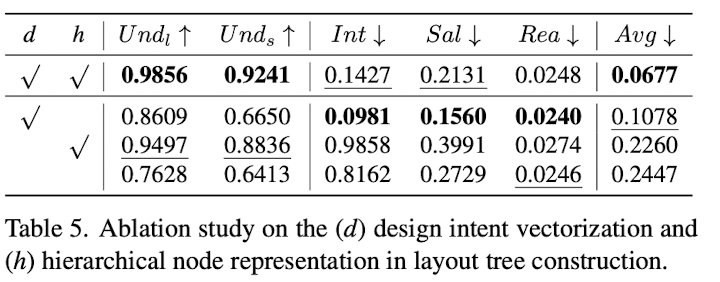
-
d만 있는 경우, Content metrics가 좋아지는 것은 빈 underlay때문임
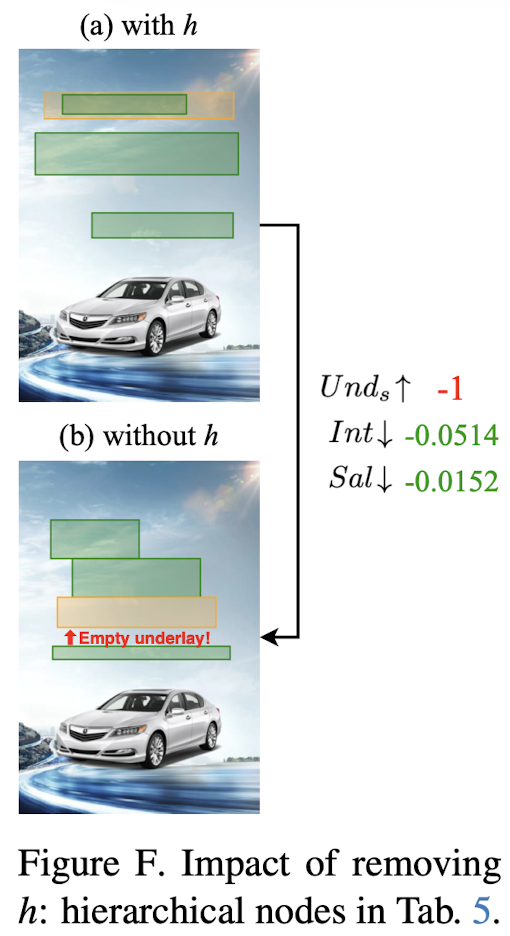
-
-
In-Context example selection 방법에 따른 비교
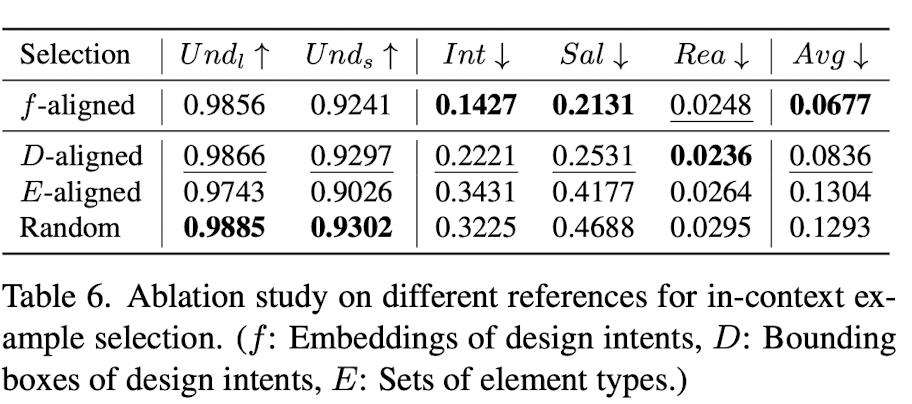
-
Cutomized design intent에 따른 실험
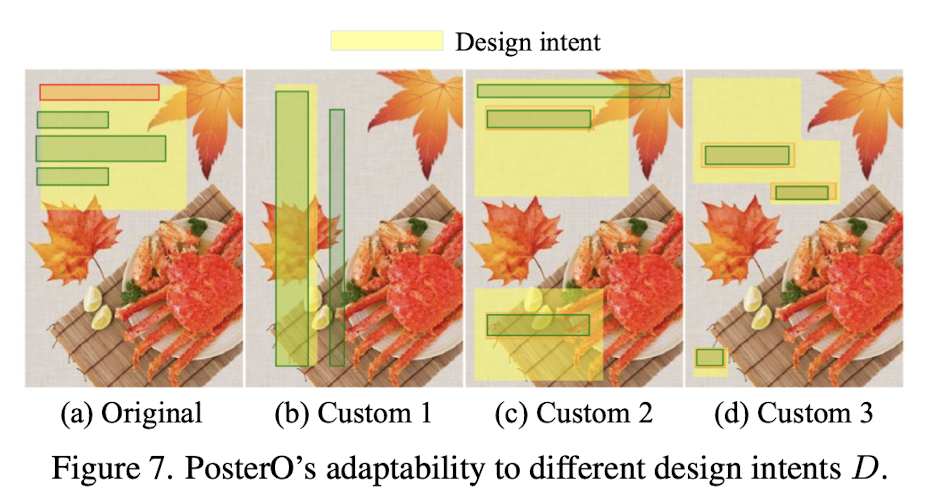
-
Small LLM에 따른 성능
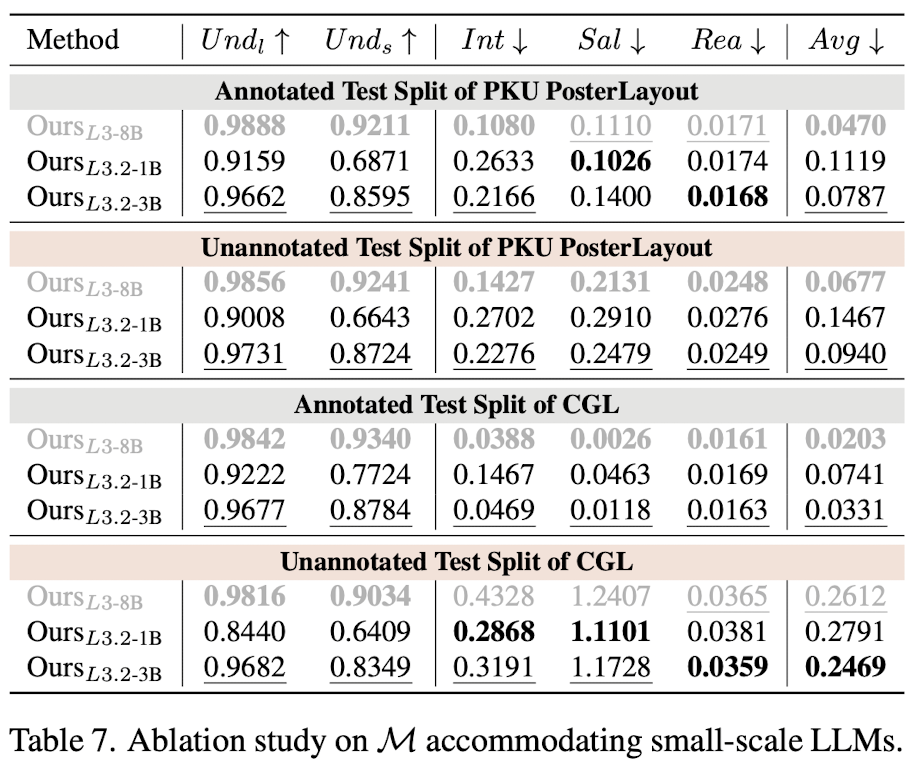
-